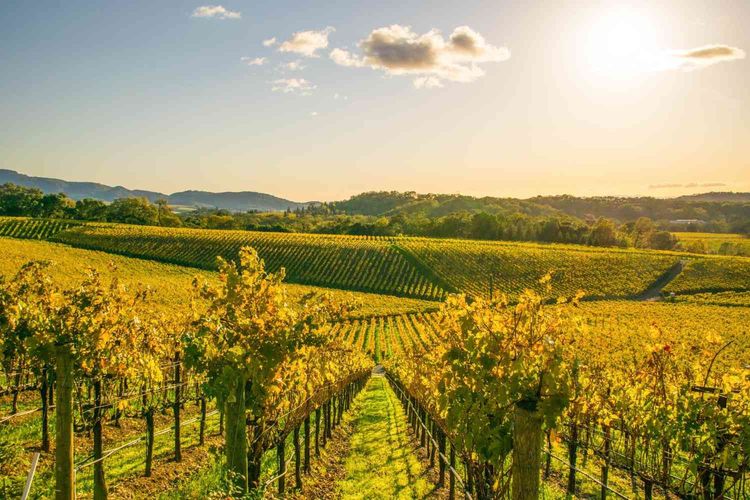The world holds treasures so extraordinary that they’re protected for future generations. The UNESCO World Heritage list honors these wonders — places where history, culture, and nature collide. Travelers seeking meaning beyond postcards often find it here. Touring these sites offers a chance to see human achievement and raw beauty side by side.
Each destination on this list tells a story. Some whisper ancient mysteries carved into rock. Others roar with volcanic might or bloom with ecosystems untouched by time. Whether you love wildlife, culture, or awe-inspiring landscapes, these eight UNESCO sites promise journeys worth remembering.
Galápagos Islands in Ecuador
The Galápagos Islands are a living laboratory of evolution. Located nearly 1,000 kilometers off Ecuador’s coast, this volcanic archipelago changed how we see life itself. Charles Darwin’s visit in 1835 inspired his groundbreaking ideas about natural selection.
Travelers today experience the same wonder. Each island holds unique wildlife. You’ll spot giant tortoises, blue-footed boobies, and playful sea lions lounging under the equatorial sun. The islands’ isolation helped species evolve in remarkable ways found nowhere else.
Visitors can join guided eco-tours led by naturalists. These tours protect the fragile ecosystem while revealing its secrets. You might hike volcanic terrain on Isabela Island, snorkel near Bartolomé’s penguin colonies, or watch marine iguanas glide through turquoise waters. Respect for conservation remains central here — every tour emphasizes responsible travel and minimal human impact.
Þingvellir National Park in Iceland
Iceland’s Þingvellir (Thingvellir) National Park is both a geological wonder and a historical treasure. It sits atop the Mid-Atlantic Ridge, where the North American and Eurasian plates drift apart. The rift creates a surreal landscape filled with fissures, lava fields, and shimmering lakes.
But Þingvellir isn’t just about geology. It’s also the birthplace of democracy in Iceland. The world’s first parliament, the Alþingi, met here around 930 AD. Imagine lawmakers gathering in open air, surrounded by volcanic cliffs and cold winds. The sense of history feels tangible, almost sacred.
Today, tours guide visitors through ancient meeting grounds and rugged trails. Snorkeling in the Silfra Fissure — a crystal-clear crack between continents — is a highlight. The water is so pure that visibility stretches for over 100 meters. Few places let you literally swim between tectonic plates.
Nazca Lines in Peru
Deep in Peru’s desert, enormous geoglyphs stretch across barren plains. The Nazca Lines remain one of the world’s greatest archaeological mysteries. Created between 500 BC and 500 AD, these figures include animals, plants, and geometric designs visible only from above.
The question everyone asks is simple: why? Scholars suggest the lines might have served as astronomical calendars, ritual pathways, or symbols honoring deities. The truth remains hidden beneath centuries of sand and speculation.
Visitors can appreciate the scale through small-plane tours. From the air, you’ll see a hummingbird, monkey, spider, and even a massive hand etched into the earth. On the ground, viewpoints like Mirador de San José offer partial views. Local guides share theories that keep your imagination racing. Despite endless research, the Nazca Lines still guard their secrets, making every visit feel like a step into the unknown.
Yosemite National Park in the United States
Few places capture the spirit of wilderness like Yosemite National Park. Located in California’s Sierra Nevada Mountains, it’s famous for its granite cliffs, giant sequoias, and roaring waterfalls. The park became a UNESCO World Heritage Site in 1984 for its unparalleled natural beauty and biodiversity.
Standing before El Capitan or Half Dome humbles even the most seasoned traveler. These colossal rock formations glow pink at sunrise and turn golden by dusk. Yosemite Falls, one of North America’s tallest, fills the valley with thunderous mist.
Tours often blend scenic drives with hiking trails. The Glacier Point lookout provides one of the most breathtaking views in the world. In spring, wildflowers carpet the meadows; in winter, snow transforms the valley into a frozen masterpiece. Beyond the views, Yosemite teaches an enduring lesson — nature doesn’t rush, yet everything gets done.
Chitwan National Park in Nepal
In the subtropical plains of southern Nepal lies Chitwan National Park, a sanctuary for wildlife and biodiversity. Once a royal hunting ground, it now stands as a conservation triumph. The park shelters rare species like the one-horned rhinoceros, Bengal tiger, and gharial crocodile.
Guided jeep safaris or canoe rides along the Rapti River offer glimpses of life in the wild. If luck favors you, you might spot a tiger stalking through the tall elephant grass. Early mornings echo with birdcalls — over 500 species have been recorded here.
Chitwan’s success story shows how eco-tourism and conservation can coexist. Local Tharu communities work with park rangers to protect wildlife. Visitors can learn about their traditional homes, dances, and crafts. Every tour contributes to preserving both nature and culture, making Chitwan a model for sustainable exploration.
Wadi Rum Protected Area in Jordan
Few landscapes stir the soul like Wadi Rum, Jordan’s “Valley of the Moon.” Its red sandstone cliffs, ancient petroglyphs, and endless dunes create a setting so otherworldly it’s been featured in films like The Martian and Lawrence of Arabia.
This desert has been inhabited for thousands of years. Bedouin tribes still call it home, guiding travelers through canyons, rock bridges, and hidden springs. Touring Wadi Rum often involves 4x4 adventures, camel treks, or overnight stays in traditional desert camps.
As night falls, the sky becomes a sea of stars. The silence feels absolute — a rare luxury in today’s noisy world. The experience isn’t just visual; it’s emotional. Standing amid this vast desert makes you realize how small, yet connected, humanity truly is.
Hiroshima Peace Memorial in Japan
Japan’s Hiroshima Peace Memorial, also known as the Atomic Bomb Dome, stands as a haunting reminder of the past. On August 6, 1945, an atomic bomb destroyed much of the city, killing tens of thousands instantly. The dome, once the Hiroshima Prefectural Industrial Promotion Hall, survived as a skeletal ruin.
Rather than erase it, Japan preserved the structure to honor victims and advocate for peace. The site, part of the Hiroshima Peace Memorial Park, includes museums, monuments, and tranquil gardens dedicated to remembrance and reconciliation.
Guided tours often begin at the dome before leading to the Children’s Peace Monument and the Flame of Peace. Each corner tells a story of resilience and hope. Visitors leave with heavy hearts yet renewed commitment to peace. It’s a place that urges humanity to remember, reflect, and do better.
Mount Etna in Italy
Mount Etna, on Sicily’s eastern coast, is Europe’s highest and most active volcano. Its fiery personality has shaped both the landscape and local culture for centuries. Despite its eruptions, people continue to live and thrive around it.
Tours to Etna offer adventure with a hint of danger. You can hike through cooled lava fields, visit craters, or ride cable cars to the summit. Steam vents hiss around you, reminding visitors that Earth’s heart still beats beneath their feet.
Etna’s volcanic soil gives rise to vineyards producing some of Italy’s finest wines. Visiting local wineries adds flavor to your tour — literally. Sip a glass of Etna Rosso while overlooking blackened slopes and distant sea views. The combination of raw geology and Italian hospitality makes Mount Etna unforgettable.
Conclusion
Touring UNESCO World Heritage Sites isn’t just about ticking boxes on a map. It’s about connecting with stories that shaped civilizations and landscapes that stir the spirit. From Ecuador’s living laboratory to Japan’s silent memorial, these sites show humanity’s depth and nature’s brilliance.
Each destination teaches something unique. The Galápagos reveals evolution’s artistry. Þingvellir bridges continents and cultures. The Nazca Lines remind us of mysteries yet unsolved. Yosemite humbles, Chitwan inspires, Wadi Rum awakens wonder, Hiroshima promotes peace, and Etna reflects power.
So, which one calls to you first? Whether you seek quiet reflection or wild adventure, the world is waiting — and it’s magnificent.




